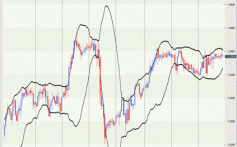OppenheimerFundsVoice Rethinking Active Share and Tracking Error
Post on: 16 Март, 2015 No Comment
(Photo credit: iStock)
When I purchased my first iPad three years ago, I took advantage of the opportunity to engrave two words on the back: Intention and Grit. I chose those words as a reminder of the essence of active investing. “Intention” represents the idea of clear investment insight and thoughtful construction of portfolios. “Grit” simply reminds me to stand by my unique convictions as long as evidence sustains them – a foundation of my team’s patient approach to value investing. To me, an “Intentional” portfolio is created by a mixture of distinctive conviction and attentive risk allocation. This combination is reflected in our consistently high active share and well managed tracking error.
Let’s get some definitions clear:
Active share measures the percentage of an active portfolio that is different from its respective benchmark.
Tracking error is a common risk metric that measures the volatility of relative returns an active manager has realized compared to his/her fund’s benchmark.
Both tracking error and active share are measures of how different an active manager is from an appropriate passive benchmark. But the similarities end there. My team views active share as the measure of how active or passive our portfolio is regardless of risk . While tracking error is a measure of how distinctive our risk is regardless of return . What we aim for is a portfolio as unique as possible from a return standpoint, but as similar as possible from a risk standpoint. This is not an easy structure to create in a portfolio, and doing so requires a combination of fundamental, quantitative, and creative tools. We believe this view of portfolio construction separates those of us who invest to thrive from those who invest to survive. So how do we do this? Let’s illustrate.
Take the energy sector construction of Oppenheimer Value Fund. We have 11 different investments in the energy sector with about 3% less weight than the Fund’s benchmark, the Russell 1000 Value Index. The largest holdings in the benchmark are Exxon Mobil Exxon Mobil. Chevron Chevron and ConocoPhillips ConocoPhillips. We do not own any of those companies. In fact, 80% of the Fund’s holdings are different from those in the benchmark – this is Active Share. Now, on the other hand, we want to make sure the differences between Oppenheimer Value Fund are mostly reflected in potential alpha (excess return), not beta (the performance of the sector). Beta is composed of all the different outside factors, including oil price sensitivity, market cap, dividend yield, interest rate sensitivity, valuation and many others. After controlling for all of these “betas,” the leftover performance is alpha. In order to be very active, but still have similar total risk to the benchmark, we need to be vigilant with our composition of betas. We do this through our stock-by-stock factor analysis and then build a beta structure as similar to the benchmark as possible using our unique building blocks. This gets us to a point where, as of September 30, in the energy sector, we were 80% unique at the stock level, with only 2% tracking error. At the Fund level, also as of September 30, we had about 75% active share with less than 2.5% tracking error.
Now, being different isn’t enough but it is a critical starting point. In order to earn our keep we have to be right. But the reward for us being “right” is pure alpha (excess return without excess risk). If we weren’t different, being “right” wouldn’t generate anything. And obviously if we’re “wrong” we don’t earn our stripes.
The bottom line is this: Active management can work, but you have to look for managers that are “Gritty” enough to be comfortable in their active skin (high active share) but also able to build “Intentional” portfolios (disciplined tracking error). If you concentrate your active manager selection on “Gritty” and “Intentional” managers we think your hunting excursion will be happy! We aim to fit that bill.
This story previously appeared on OppenheimerFunds.com.
Past performance does not guarantee future results.














